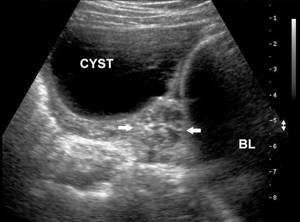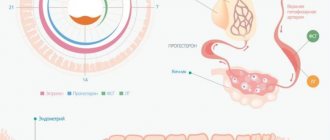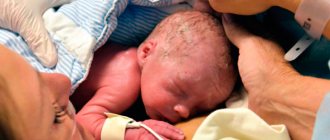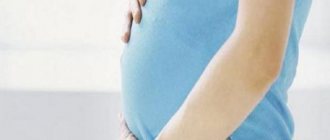Several decades ago, the problem of infertility mercilessly deprived women of the joy of motherhood. However, today modern medicine offers to solve such difficulties using a variety of methods, one of which is stimulation of pregnancy. As is known, it can be carried out in various ways, and only in cases where there are appropriate indications and purposes for this. What kind of procedure is this and how it is carried out, we will try to find out together with you today.
Pregnancy stimulation method
Stimulation of pregnancy involves drug imitation of the natural cycle of egg maturation in the female body. In other words, if the fair sex has problems with ovulation, taking special medications can start the process of forming a full-fledged egg that will be suitable for fertilization.
Note that impaired maturation of eggs and their release from the ovary are associated with various health problems. In this regard, a woman cannot fully conceive a child naturally. Such cases are classified as one of the forms of infertility, which, as a rule, is provoked by endocrine disorders, excess or lack of weight, as well as other abnormalities in the body.
Currently, this method is also called ovarian stimulation. And it is used quite widely. And when used correctly, 60-75% of women who seek help successfully become pregnant and bear healthy babies. This method is suitable for owners of healthy eggs, which, due to various reasons, cannot mature to the required size.
Why pregnancy does not occur after ovulation stimulation
There are many reasons that prevent conception. People often ask why pregnancy doesn’t occur, but how much you need to worry about this and what needs to be done if there are still reasons for anxiety – we’ll figure it out.
- Why, if both are healthy, does pregnancy not occur?
- There is ovulation, but pregnancy does not occur: reasons
- Other reasons
- We don’t use protection, but pregnancy doesn’t occur
- If it doesn't work out, what should I do?
- Why doesn't pregnancy occur the first time?
- After ovulation stimulation
- After laparoscopy
Why doesn't pregnancy occur if both are healthy?
For pregnancy to occur, in addition to the health of both spouses, several more conditions are necessary:
- Sexual intercourse on the right days for conception. A woman's fertile period depends on the length of her menstrual cycle. The release of a mature oocyte from the dominant follicle occurs 14 days before the onset of menstruation, both during regular and irregular periods. The optimal time for conception is two days before and after the release of the oocyte, on the so-called days of ovulation.
- Presence of an egg (oocyte). During ovulation, it is easier to “catch” an oocyte if the cycle is regular, but even if menstruation, like clockwork, occurs exactly on schedule, the presence of an egg ready for fertilization must be confirmed (for example, using tests). Sometimes anovulatory cycles occur, when hormones are normal, periods are regular, tests are also good, but eggs are not. In these cases, pregnancy does not occur. They are considered physiological if they occur no more than two or three times a year, no more. But this is still just the tip of the iceberg.
There is ovulation, but pregnancy does not occur: reasons
Reasons why ovulation occurs but pregnancy does not occur:
- poor quality oocyte,
- bad spermogram;
- genetic inferiority of the zygote.
What are antisperm antibodies in men and women
Conditions that are necessary for pregnancy with preserved ovulation:
- The oocyte must be mature and ready to fuse with a sperm. Unfortunately, the egg becomes overripe and ages, as a result of which the quality of the genetic material of the reproductive cell suffers. The window during which an oocyte can be fertilized lasts on average 24-48 hours. The period can vary in one direction or another for several hours, depending on the characteristics of the woman’s body.
- Mature, motile sperm, i.e. the spermogram is normal. The conditions of modern life negatively affect the quality of sperm, although men mostly do not accept this fact and insist that everything is fine with them. If there is no pregnancy for six months, it is worth carefully examining not only the woman, but also her spouse.
- The “meeting” is not just a male and female reproductive cell, but a genetically complete sperm and egg. If there is a breakdown in the genetic code of the fertilized egg, the embryo most often dies on the fourth day and is released with menstrual flow, and the girl does not even suspect that in fact there was a pregnancy, but implantation did not occur. In the human population this occurs in 30% of cases. This is the main reason why pregnancy does not occur if all possible tests, including hormones, are normal, both partners are healthy, the tubes are patent and the spermogram is normal.
If there is ovulation, but pregnancy does not occur, this is not yet a cause for concern. It is not always possible to conceive a baby the first time, but more on that later.
Other reasons why pregnancy does not occur
The reasons why pregnancy does not occur (first or second) should be systematized and divided into groups according to their effect on the stages of fertilization and implantation:
- Fallopian tubes are absent or fused (tubal factor infertility). Adhesions prevent the movement of sperm towards the egg, but even if the sperm manages to get through the holes between the adhesions and fertilize the oocyte, the egg will not be able to descend into the uterine cavity due to its size and an ectopic pregnancy develops. The oocyte is the largest cell in the body. The mystery of fertilization takes place in the fallopian tube, or rather in its ampulla, the widest part facing the ovary.
- One tube is missing, and ovulation is constantly on the opposite side. The opinion that ovulation occurs alternately is erroneous.
- The presence of polyps, myomatous nodes, endometrioid cysts, adhesions and deformities in the uterus (after abortion, frozen pregnancy, cesarean section). They interfere with the attachment of the embryo, therefore, there are no conditions for pregnancy. Often, the diagnosis of these diseases occurs after partners have been unable to get pregnant for a long time. Sometimes the journey to the doctor drags on for a year or more, because the symptoms are not always clearly visible.
Source: https://luxeth.ru/pochemu-ne-nastupaet-beremennost-posle-stimuljacii-ovuljacii/
Contraindications
Stimulation of the ovaries or stimulation of pregnancy is considered a serious intervention in the process of the holistic functioning of the woman’s body. In this regard, there are a number of cases when this method is prohibited from being used to conceive a baby. So, these include:
- Hereditary diseases. If there are gene or chromosomal abnormalities in the germ cells, it is strictly contraindicated to use this method.
- Ovarian hyperstimulation. This syndrome develops as a result of an excess of sex or pituitary hormones with enlarged edematous ovaries. A similar state is achieved during self-medication to stimulate the ovaries.
- Inflammatory processes. It is contraindicated to stimulate pregnancy during inflammation in the ovaries, uterus, tubes, as well as in the presence of sexually transmitted infections.
- Other restrictions. First of all, these are age, severe diseases of the liver, kidneys and heart.
Where to start and how to carry it out
In order to undergo ovarian stimulation, you should first undergo a medical examination, which will provide complete information about the readiness of the female body for this procedure. Therefore, the couple is asked to do:
- blood test for the presence of infections - syphilis, HIV, hepatitis, latent and genital;
- examination of the genital tract - identification of genital tract infections in both spouses;
- smear tests - to determine the cleanliness of the vagina and cancer markers;
- blood test to detect antibodies to rubella.
Next, you need to conduct a general examination with a therapist . In this case, the doctor must give additional opinions about the woman’s health and ability to bear a child. In addition, the woman must be sent for an ultrasound to assess the condition of the breasts, pelvis and ovaries. According to the rules, observation is carried out over three menstrual cycles to eliminate errors in the preliminary diagnosis.
What is ovulation stimulation for conception?
Complex measures aimed at stimulating ovulation with the ultimate goal lead to normalization and harmonization of all levels of regulation of the cyclic rhythm of the female body. There are five levels of regulation in the female body: cerebral cortex → hypothalamus → pituitary gland → adrenal glands → ovaries.
Based on this regulation scheme, it is possible to determine the tactics of preparing your own body for ovarian stimulation, conception and pregnancy.
- Eliminate stress, minimize emotional stress, if you need to understand yourself or consult a psychologist.
- Normalize your daily routine and stick to it every day, get up and go to bed at the same time, eat at the same time, go for a walk regularly.
- Review your diet, focus on vegetables and fruits, give up sweets, flour, carbonated and alcoholic drinks, instant coffee.
- Gradually introduce regular exercise into your daily routine. This could be home exercises, a morning run with the dog, or group classes in the gym. It is important that they are regular, the load is adequate and the classes themselves bring only positive emotions.
How is ovarian stimulation performed? Does the method of its implementation differ from the cause of infertility?
The method of ovulation stimulation has general principles, but the differences in it are due to both the cause of infertility and a combination of other factors: the woman’s age, the presence of concomitant gynecological pathology, and general health.
The protocol for stimulating ovulation with gonadotropins can be long, super-long and short. Each of them has its own variations, which were developed by practicing doctors based on clinical experience.
The long stimulation protocol lasts 20 days, starting on the 21st day of the previous cycle. Gonadotropin-releasing hormone agonists are used in a long protocol to block the pituitary gland, then FSH and LH are introduced at the beginning of a new cycle. This protocol allows you to completely control hormonal processes in a woman’s body. A long protocol is used for severe endometriosis and uterine fibroids, even after surgery.
The super-long protocol is long - it takes 2-3 months of preparation. Preparation involves the administration of gonadotropin-releasing hormone agonists to completely block the function of the pituitary gland. Due to the large number of side effects and poor tolerance by women, the super-long protocol is used extremely rarely.
The short protocol is characterized by an impact on a woman’s hormonal regulation for 12-14 days. From the second or third day, FSH and LH are taken, under the control of follicle growth, approximately in the middle of the cycle, oocyte puncture is carried out (if stimulation is carried out before IVF) or hCG is administered for spontaneous ovulation.
The advantages of the short protocol include:
- Wide range of application among cases of infertility;
- Less interference in the regulation of a woman’s hormonal homeostasis than with a long protocol;
- The procedure time is shorter by a week than with a long protocol;
- Better tolerability of such intervention by women;
- Possibility of embryo transfer in the same cycle.
Today, a short protocol has become the standard for ovulation stimulation.

- the possibility of stimulation in older women with depleted ovarian reserve;
- stimulation with minimal doses of gonadotropins, which allows the growth of one dominant high-quality follicle;
- the possibility of stimulation in 3-6 cycles in a row to obtain 3-6 eggs;
- all embryos undergo cryopreservation, and transfer is carried out 2-3 cycles after stimulation with gonadotropins - in a natural cycle.
Stimulation process
To perform ovarian stimulation, you must wait until the menstrual cycle begins. From this day the counting of the days of the cycle itself begins. As a rule, medications are used for the procedure, for example Clomiphene. It is prescribed from days 3 to 7 of the cycle in certain doses. Then ultrasound monitors and monitors the growth of follicles.
When 1-2 of them are ripe, gonadotropin injections are given in the middle of the cycle during ovulation. This substance causes ovulation. Hormonal medications act in a similar way. During the period of ovulation, the doctor recommends having sexual intercourse daily, or every other day with concomitant use of the drug Duphaston in the 2nd phase of the cycle. If ovarian cysts form during stimulation, treatment is stopped for 3-4 months with a review of drug doses. However, you should not despair ahead of time, do not lose hope and fight on!
Getting pregnant after ovulation stimulation: chances, probability, reviews
:
Of course, every woman strives to create a full-fledged family, which, naturally, will have children. Unfortunately, not all women manage to get pregnant right away, and some do not succeed at all. A stumbling block on the path to motherhood can be various circumstances and existing ones, both somatic pathologies and diseases of the reproductive system.
It is worth noting that recently the problem of infertile families has become quite relevant. In addition, unfortunately, nowadays infertile couples of quite young age are becoming more and more common. But thanks to a huge breakthrough in medicine in the field of reproductive medicine, today specialists can influence such a complex process as conception.
Doctors have the opportunity to help infertile couples and couples who have problems conceiving, influence this process using various methods. One of the main reasons for female infertility is the problem of egg maturation.
And this, it is worth noting, is a fairly significant problem, since without an egg and ovulation, conception is almost impossible, with the exception of the use of assisted reproductive technology methods.
What is ovulation and why may it be absent? Ovulation is the direct release of an egg into the fallopian tube as a result of the rupture of a mature follicle. The female body is designed in such a way that the number of eggs is laid during intrauterine development and this number is about 4-5 million follicles.
By the time a girl is born, their number is significantly reduced and is already about 1 million. And by the time of puberty and menarche, about 300 - 400 thousand remain. But, despite such a seemingly large number of follicles, only 300-350 of them will have an egg.
And under the influence of various factors, ovulation may not occur, and then it is completely clear why you cannot get pregnant.
When ovulation is stimulated, the process of maturation and release of the egg is regulated using various methods under the strict supervision of specialists.
Who did ovulation stimulation help get pregnant?
It is worth noting that ovulation stimulation is a method of infertility treatment that is performed according to indications. Ovulation stimulation should be used in women with an anovulatory cycle caused by hormonal imbalance.
Also, stimulation of ovulation can help those women who have been diagnosed with a reproductive system disease such as polycystic ovary syndrome and ovarian cyst. In addition, they stimulate ovulation if other treatment methods have been ineffective.
It is worth noting that ovulation stimulation is an integral part of artificial insemination using the in vitro fertilization method. Stimulating ovulation will also help women who have been diagnosed with “infertility of unknown origin” to get pregnant.
According to statistics, those women who became pregnant after ovulation stimulation previously underwent a series of examinations.
As a rule, a self-respecting and highly qualified specialist always prescribes a set of studies, which consists of laboratory and instrumental ones, before ovulation stimulation begins.
The main goal pursued by the doctor when prescribing an examination is to identify possible contraindications to ovulation stimulation.
Contraindications include pronounced hormonal imbalance and inflammatory diseases of the pelvic organs. Ovulation stimulation is not performed for women with fallopian tube obstruction. In some cases, taking into account other research indicators, ovulation stimulation is not performed on women over 39-40 years of age. So, before starting the procedure, a woman needs to visit a therapist who will identify the presence of somatic pathologies that are not compatible with pregnancy. Electrocardiography and ultrasound examination of the pelvic organs and mammary glands should also be performed. Ultrasound of the mammary glands is necessary to ensure the absence or presence of tumors, which are most often sensitive to hormones. Accordingly, stimulation of ovulation provokes an accelerated growth of education. The next mandatory step in preparing for the procedure is determining the patency of the fallopian tubes. in case of obstruction of the fallopian tubes, the doctor decides to perform laparoscopy or choose in vitro fertilization. How can we do without measuring the growth of follicles, which will allow us to find out whether there is ovulation and how the follicle grows. From laboratory tests, for a positive result of ovulation stimulation it is necessary to undergo such tests. First of all, a woman undergoes a clinical blood test, a blood test for hepatitis, HIV, syphilis and AIDS, as well as tests to determine a number of sexually transmitted infections. It is especially important for the purpose of ovulation stimulation to determine the level of sex hormones, as well as thyroid hormones. A blood test for testosterone and prolactin is carried out not only before the procedure, but also repeatedly during it. So, after a comprehensive examination and obtaining the results of the tests and studies performed, it is necessary to move on to the next stage - determining the woman’s ovarian reserve. By determining the ovarian reserve, an assessment is made of the possible results of ovulation stimulation. Also, based on the results of this study, the scheme for stimulating ovulation and its intensity, the selection of specific drugs and their doses, and the frequency of administration are determined. A woman's ovarian reserve is determined using a blood test performed after taking FSH.
Also for this purpose, a stress test is carried out with the use of Clomiphene. The results of this analysis allow us to evaluate the possible results of ovulation stimulation.
Ovulation stimulation: reviews, who got pregnant
Stimulation of ovulation, as a rule, in most cases is carried out in several ways, which are called protocols. Depending on the indicators and causes of ovulation disorders, a woman may be offered a short or long protocol.
A short stimulation protocol is one of the most widely used methods of combating infertility, which is associated with impaired ovulatory function of a woman.
If we compare it with a long protocol, then unlike the latter, stimulation begins from the very first menstrual cycle, the first days.
In a long protocol, it is first necessary to suppress the independent production of pituitary hormones, and after that proceed directly to stimulation.
This technique is suitable for women who have been diagnosed with polycystic ovary syndrome, a reduced ovarian reserve, and if the woman has already undergone stimulation, but with a long protocol and this did not give the desired effect. Also, it is the short protocol that is more suitable for stimulating ovulation in women in later reproductive age. This occurs in women over 25 years of age. The short protocol begins with stimulation of superovulation already from the second to fourth day from the beginning of the menstrual cycle.
To suppress the production of hormones that stimulate premature ovulation in a short protocol, GnRH antagonists are usually used, which are additionally prescribed from the 5-6th day of stimulation. In a short protocol, drugs from this group are taken for 28-35 days.
It should be noted that this protocol is much easier to tolerate than the long one. This is due to the fact that a minimal amount of drugs is prescribed, which reduces the overall cost and impact on the body as a whole.
But the most important thing is that when using a short protocol, the risk of developing a complication such as ovarian hyperstimulation syndrome is significantly lower.
In any case, every woman who has problems conceiving has individual characteristics and indications. Also, the choice of stimulation protocol depends directly on the hormonal background of a woman.
To do this, a woman needs to undergo a series of specific tests to assess her own hormonal levels. Based on this, the most effective protocol is selected that will help in conception and will not harm her health.
The long protocol involves blocking the pituitary gland with antagonists or agonists. As a rule, the long protocol begins on days 21–24 of the menstrual cycle and is carried out over 2–2.5 weeks.
Direct stimulation of the ovaries with gonadotropic drugs begins on the 3rd–5th day of the menstrual cycle and lasts exactly as long as the blockade of the pituitary gland.
An injection of the hormone human chorionic gonadotropin is administered after the end of taking stimulant medications. Next, progesterone support for the corpus luteum of the ovaries is prescribed.
Stimulation of ovulation: reviews of those who became pregnant with multiple pregnancies
In practice, there are numerous cases when a woman, after stimulating ovulation, matures several eggs, as a result of which the woman develops a multiple pregnancy. Moreover, such a pregnancy proceeds completely normally.
Stimulation of ovulation. Reviews of those who became pregnant with polycystic disease
Stimulation of ovulation in polycystic disease is the only way to achieve normal ovulation, as a result of which a woman can conceive without problems. Taking hormonal medications to stimulate ovulation stimulates the ovary, which allows the remaining normal ovarian tissue to function normally.
Stimulation of ovulation: reviews of those who became pregnant with endometriosis
Endometriosis is one of the diseases of the female reproductive system that leads to infertility. This disease is the growth of endometrioid tissue outside the uterine cavity.
Since the cells of this tissue are quite sensitive to hormones, stimulation of ovulation in endometriosis is carried out extremely carefully and in small doses so as not to provoke the growth of endometrioid tissue.











